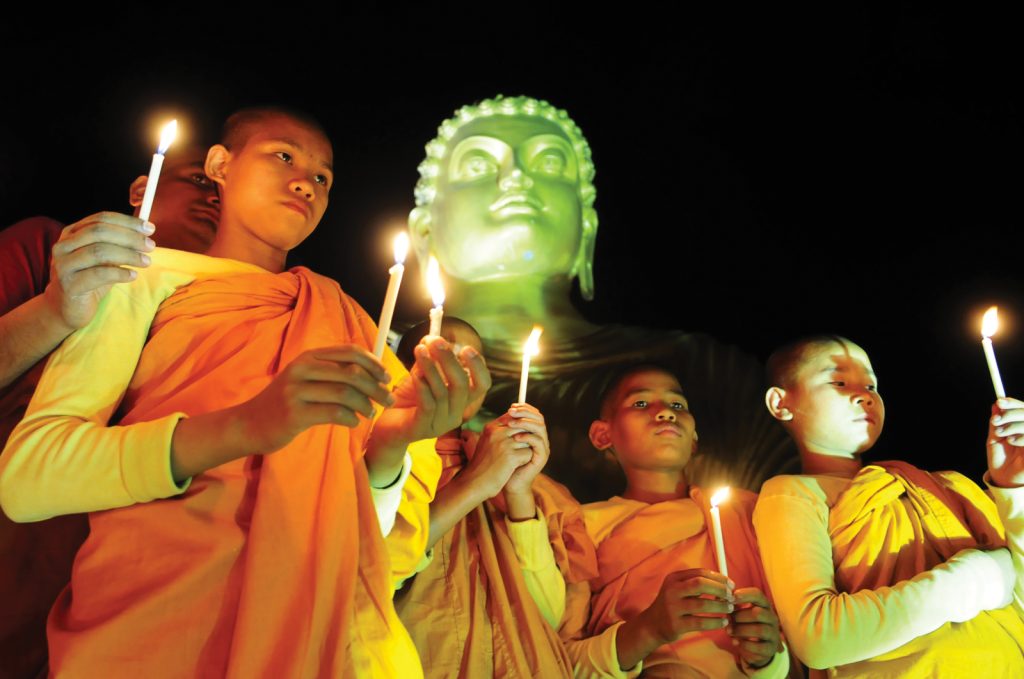This spring, Buddhists worldwide will celebrate Vesak, a holiday that marks the Buddha’s birth (and also death and enlightenment), with paper lanterns, gifts, and the bathing of a baby Buddha statue. And although the Buddha was born many moons ago, Vesak’s current iteration is a recent development in the tradition’s 2,500-year history, says Dr. Hwansoo Kim, an associate professor of religious studies at Yale University and author of The Korean Buddhist Empire: A Transnational History, which covers the topic. In fact, celebrating the life of Shakyamuni, the historical Buddha, is a thoroughly modern practice.
Vesak has been celebrated throughout Buddhist history, but the emphasis on the historical Buddha (rather than other deities and bodhisattvas) started as a way to unite Buddhism across Asia in the colonial period. According to Kim, Vesak as a “really festive, massive, and theatrical” holiday started in Sri Lanka in the late 19th century. After colonizing that country in 1815, the British had banned Buddhist celebrations—a move that was supported by Christian missionaries. Buddhist leaders, including the Theosophist Colonel Henry Steel Olcott and the Buddhist revivalist and writer Anagarika Dharmapala, petitioned the colonial government to reintroduce the Buddha’s birthday and designate it a national holiday.
“Their argument was ‘You’re actually damaging your legitimacy by undermining the local custom, and you’ve got to really integrate Buddhism as a whole into your colonial rule to be effective.’ And the colonial government took it seriously,” Kim said. It worked, and Vesak Day became a national holiday in Sri Lanka in 1884.
This new Vesak Day looked a lot like Christmas, and that wasn’t an accident, either. Modern Vesak celebrations were based on characteristics of Christian holidays, Kim said, with cards, carols, gifts, and parades— even a Buddhist flag—that ended up “recovering a sense of pride among Sri Lankan Buddhists who had been marginalized in society under colonial rule.”
With their work done in Sri Lanka, Olcott and Dharmapala took their cause for creating a pan-Buddhist movement on the road, giving more than a hundred talks in Japan toward the end of the 19th century. Japan’s Buddha birthday celebration, called Hana-matsuri (literally “flower festival”), soon followed and became entwined with the country’s military ambitions. “The late 19th century is really a fascinating period, the way Buddhists helped each other [understand] their own tradition, cope with Christian missionary work, and make Buddhism relevant,” Kim said.
Yet even as the birthday celebrations continued to spread throughout Asia in the 20th century, the Buddhist world never agreed upon a single day to celebrate it. Thus different countries each designated a separate holiday based on either the lunar or the Gregorian calendar and continue to maintain distinct birthday traditions today.
Thank you for subscribing to Tricycle! As a nonprofit, we depend on readers like you to keep Buddhist teachings and practices widely available.
